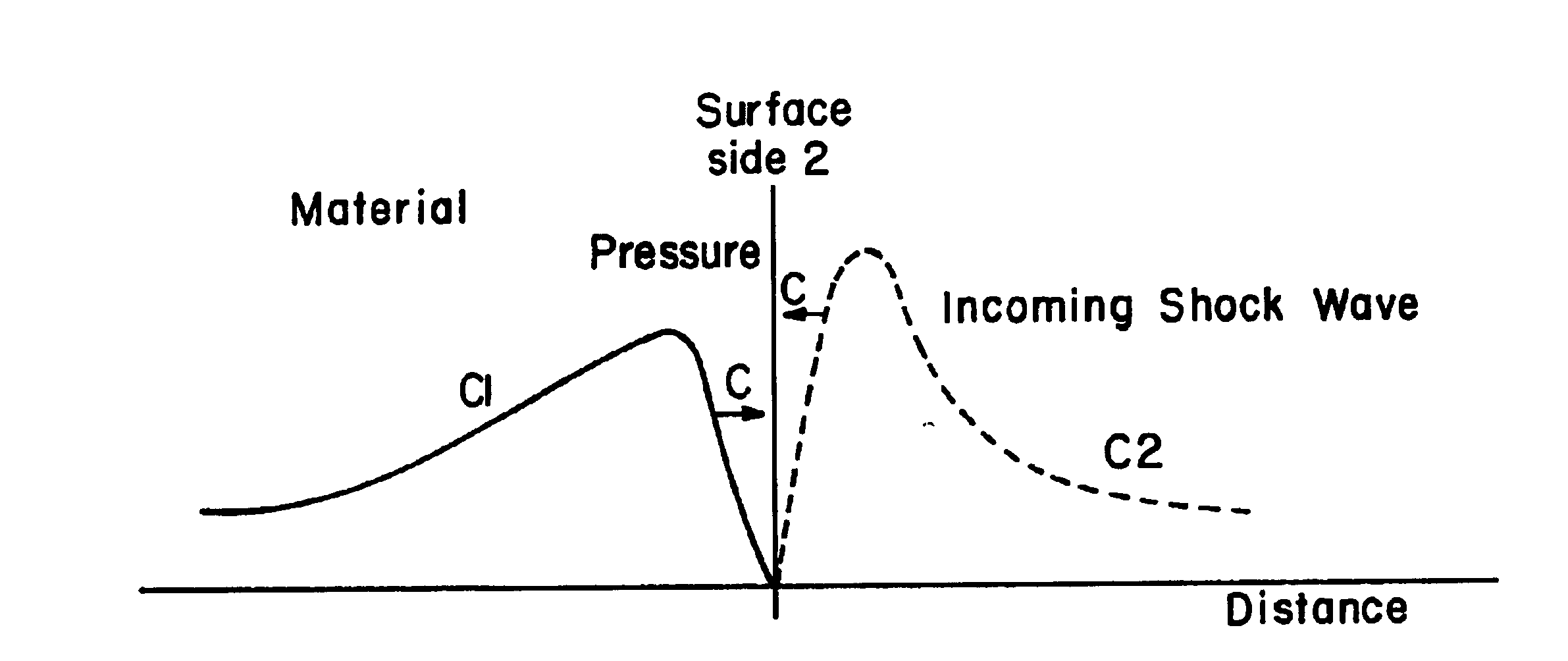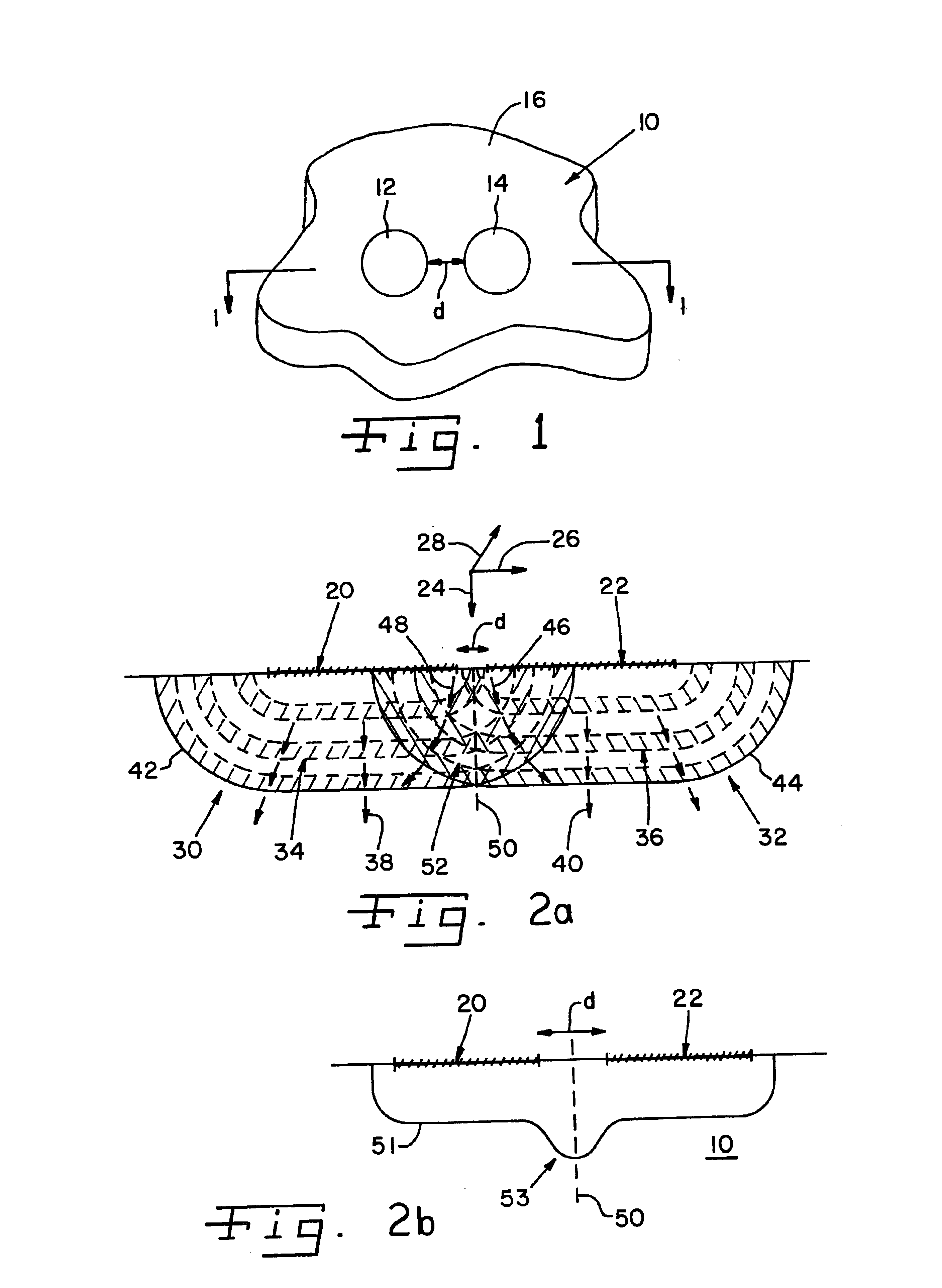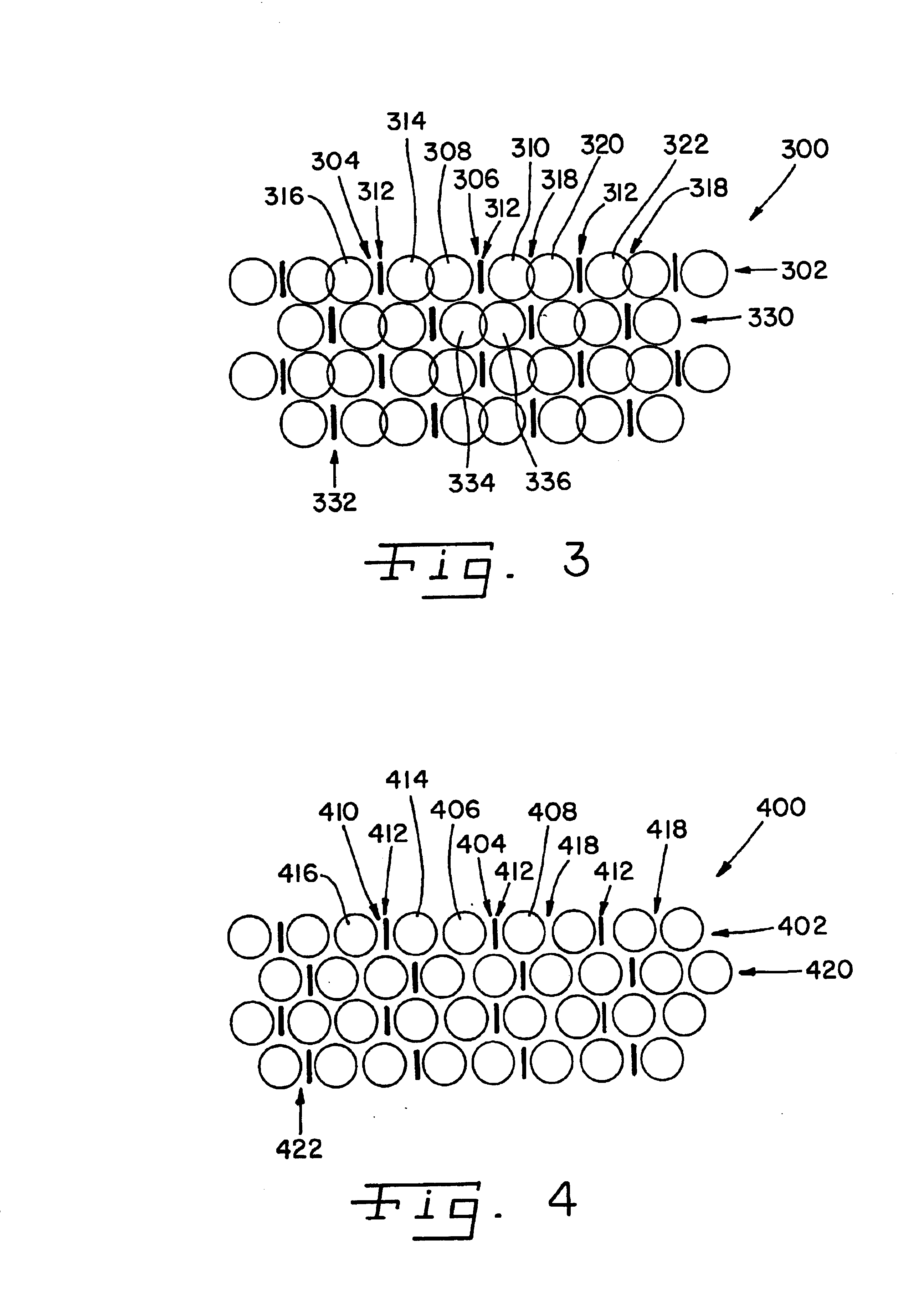Method using laser shock processing to provide improved residual stress profile characteristics
a technology of residual stress and laser shock, which is applied in the field of laser shock peening techniques, can solve the problems of little attention to determining useful techniques that can provide, and achieve the effect of improving the penetration depth and better controlling the depth of residual stress
- Summary
- Abstract
- Description
- Claims
- Application Information
AI Technical Summary
Benefits of technology
Problems solved by technology
Method used
Image
Examples
second embodiment
Reference is now made to FIGS. 8 and 9 to illustrate a laser shock processing operation, according to the present invention. As discussed further, this embodiment involves a dual-sided laser shock peening operation that forms fully opposing laser shock peened surfaces at opposing sides of a workpiece using an operating sequence that forms the relevant laser beam spots at different times.
For comparison purposes, reference is first made to FIG. 8A, which depicts the double-sided laser shock peening of a thin section using laser beams arriving at opposite sides of the workpiece at the same time. In particular, workpiece section 800 having opposite sides 802, 804 is simultaneously laser shock peened at sides 802, 804 to form laser shock peened surfaces 806 and 808, respectively.
As shown, shockwaves 810, 812 induced by laser shock peening propagate toward one another from respective laser shock peened surfaces 806, 808. Since the shockwaves 810, 812 were likewise created simultaneously, ...
third embodiment
Referring next to FIG. 10A, there is shown a cross-sectional view which depicts the double-sided, simultaneous laser shock peening of a thin section using laser beams having different pulse lengths, according to the present invention.
Illustrative workpiece 900 includes sides 902 and 904 disposed generally opposite one another and a mid-thickness plane 914. The opposing sides 902 and 904 are simultaneously laser shock peened with laser beams having different pulse lengths to form opposing laser shock peened surfaces 906 and 908, respectively. As shown, the laser shock peened surfaces 906 and 908 are respectively irradiated with representative laser beams 910 and 912, where the pulse length of laser beam 910 is longer than the pulse length of laser beam 912.
It is preferable that the laser shock peened surfaces 906, 908 be shaped and dimensioned identically. This requires, for example, the use of identically sized laser beam spots. Additionally, it is preferable that the laser shock pe...
fourth embodiment
Referring next to FIGS. 11 and 12, FIGS. 11A-C show a series of cross-sectional views of a workpiece section that is laser shock peened using various amounts of lateral offset between the dual-sided laser shock peened surfaces, according to the present invention.
FIG. 11A shows a lateral offset where the laser shock peened surfaces oppose each other in part, i.e., there is a partial overlap of the lateral dimensions. FIG. 11B shows a lateral offset where the neighboring edges of the laser shock peened surfaces line up with one another, but there is no overlap. FIG. 11C shows a lateral offset where the neighboring edges of the laser shock peened surfaces are spaced-apart from one another, i.e., there is no overlap of the lateral dimensions.
Referring first to FIG. 11A, workpiece 940 is simultaneously laser shock peened at both of its opposing sides 942 and 944 using respective laser beams 946 and 948 to form respective laser shock peened surfaces 950 and 952. As shown, the laser shock ...
PUM
| Property | Measurement | Unit |
|---|---|---|
| time | aaaaa | aaaaa |
| time | aaaaa | aaaaa |
| time | aaaaa | aaaaa |
Abstract
Description
Claims
Application Information
 Login to View More
Login to View More - R&D
- Intellectual Property
- Life Sciences
- Materials
- Tech Scout
- Unparalleled Data Quality
- Higher Quality Content
- 60% Fewer Hallucinations
Browse by: Latest US Patents, China's latest patents, Technical Efficacy Thesaurus, Application Domain, Technology Topic, Popular Technical Reports.
© 2025 PatSnap. All rights reserved.Legal|Privacy policy|Modern Slavery Act Transparency Statement|Sitemap|About US| Contact US: help@patsnap.com



